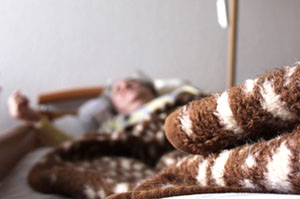A group of states is testing whether Medicaid patients who seek emergency psychiatric care at private psychiatric hospitals are better off if the federal government picks up part of the costs.
Right now, the federal government does not help states pay for inpatient psychiatric care for many Medicaid patients—a longstanding policy meant to discourage states from cost-shifting to the federal government and institutionalizing patients.
But many advocates and officials believe the policy is discriminatory and has become a barrier to treatment. For example, patients in need of psychiatric care can land in the emergency rooms of regular hospitals, which may be overburdened or unable to offer them proper treatment—a problem that is exacerbated by cuts to states’ mental health budgets that reduce the availability of services. If the federal government paid inpatient psychiatric facilities to treat Medicaid patients, those problems could be lessened, they say.
Specifically, under current law, states cannot receive federal reimbursement for Medicaid patients between the ages of 21 and 64 who are treated at “institutions for mental disease” with 17 or more beds. The Centers for Medicare & Medicaid Services announced earlier this month that 11 states and the District of Columbia will participate in a demonstration program that rolls back what’s known as the “IMD exclusion” for a slice of inpatient treatment: emergency psychiatric care. CMS defines this care as necessary when an individual expresses suicidal or homicidal thoughts or gestures and is determined to be dangerous to him or herself or others.
Ron Honberg, the national director for policy and legal affairs at the National Alliance on Mental Illness, said the demonstration is a modest but promising one. NAMI supports ending the IMD exclusion entirely.
“We’re hoping this will at least facilitate inpatient treatment for sufficient periods to get people stabilized,” he said. He also added that he understands the demonstration is limited but hopes CMS will consider a broader definition of who should qualify for this emergency care for the program.
However, not all mental health advocates support ending the IMD exclusion. Chris Koyanagi, policy director at the Judge David L. Bazelon Center for Mental Health Law, said it is unclear that substituting federal dollars for state dollars would help patients, especially if state savings aren’t invested in community-based services for this population.
“It’s the failure to fund the community that’s creating the shortage,” she said. Without better funding for community-based services, it’s impossible to know the true extent of access problems, according to Koyanagi.
As for the demonstration specifically, Koyanagi said she is concerned that state hospitals are unable to participate, especially because they are well connected to community-based services that can ensure a patient has a smooth transition out of the hospital.
Both Honberg and Koyanagi said the evaluation stage of the demonstration will be critical to determine how patients fared under the demonstration, what savings were generated and how other funding was affected.
Under the three-year demonstration program, the states will be eligible for up to a total of $75 million in federal matching funds. The states are: Alabama, California, Connecticut, Illinois, Maine, Maryland, Missouri, North Carolina, Rhode Island, Washington, and West Virginia.







